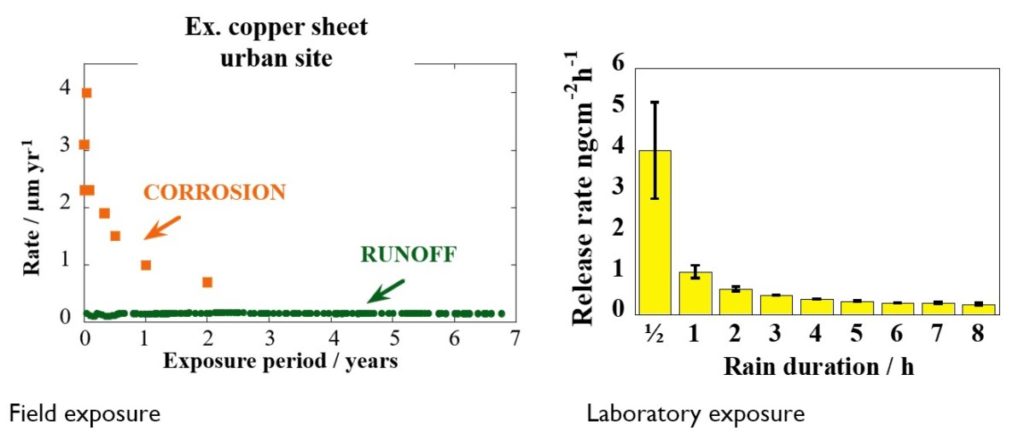Quantitative measurements/information of the diffuse release of metals released from outdoor constructions is today many times a prerequisite for obtaining building permits, particularly if roofing or cladding materials consist of materials considered potentially hazardous to the environment. It is, in addition, of great importance to evaluate the materials performance from an aesthetical perspective as well as from a corrosion perspective. The presence of a field testing site located at KTH in combination with access to a wide range of analytical techniques for surface and material characterization provide a complete setup where e.g. metal runoff (Atomic Absorption Spectroscopy), surface morphology and chemistry (e.g. SEM-EDS, XPS, XRD, FTIR/ATR, Confocal Raman), aesthetic appearance (photo spectrometry) and corrosion rates (mass loss) can be evaluated. The work procedure developed and performed at the KTH field test site was in 2011 registered as an international ISO standard for determining and estimating metal runoff as a result of atmospheric corrosion.
In addition to the field exposure laboratory simulations, providing close control of experimental parameters, proven to closely mimic field conditions, can be performed using a combination of a specially designed rain chamber and a climate chamber to simulate environments and exposure scenarios ranging from rural to marine conditions.
References
Corrosion of metals and alloys — Procedures to determine and estimate runoff rates of metals from materials as a result of atmospheric corrosion, ISO/DIS 17752:2011Journal of The Electrochemical Society, 152, 1, B23-B29, 2005, DOI: 10.1149/1.1834901
Science of the Total Environment 412-413 (2011) 46–57, DOI: 10.1016/j.scitotenv.2011.09.083
Corrosion Engineering, Science and Technology, 43:2, 134-141, DOI: 10.1179/174327808X286383
Corrosion Science, 157, 2019, pp 337-346, DOI: 10.1016/j.corsci.2019.05.025


